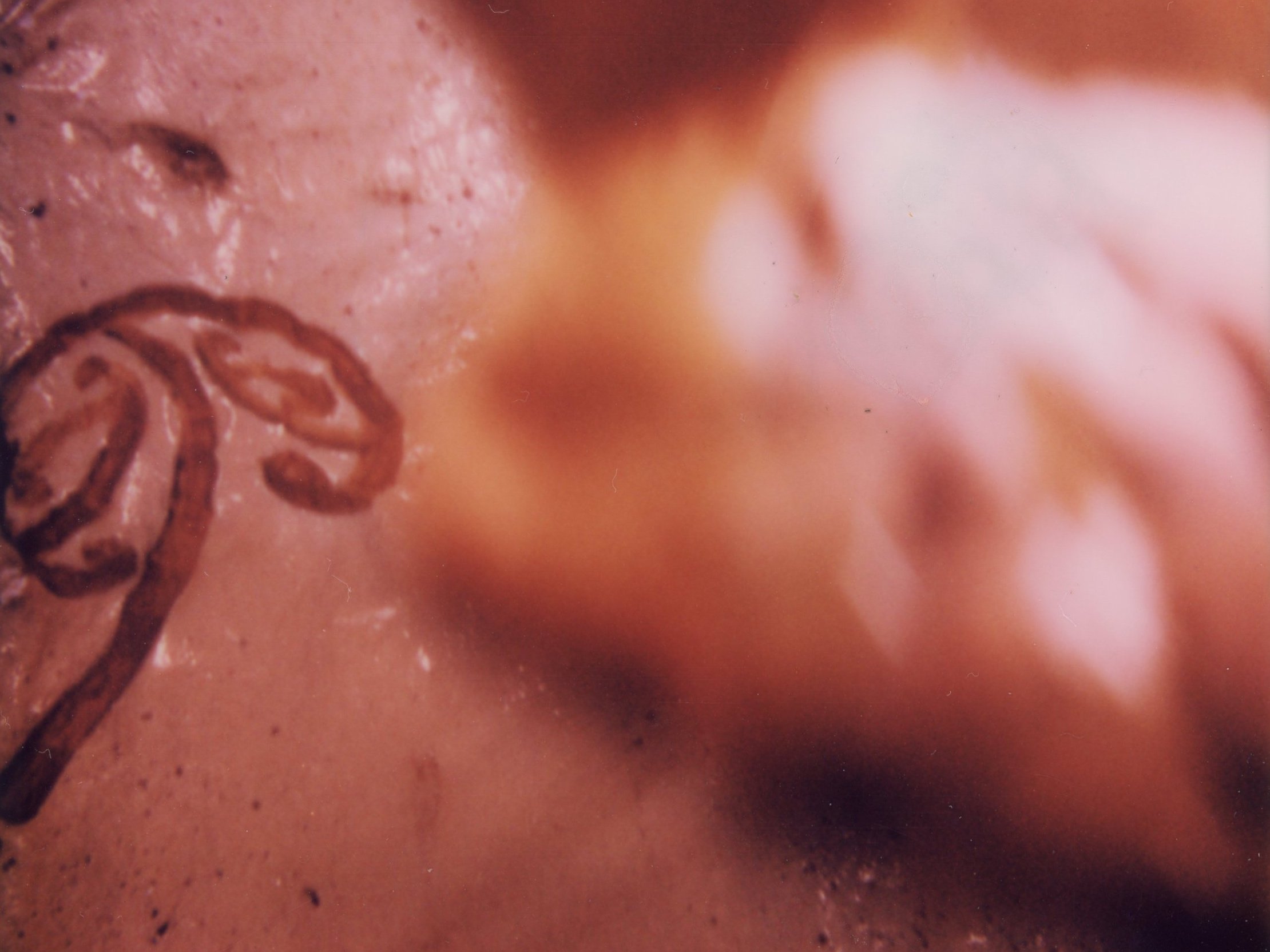
Movements in our blood -
The work of Tessa Williams
Nā Sarah Hudson - March 2022
This piece deals with grief and healing after experiencing the loss of a pregnancy through abortion and miscarriage.
Kauae Raro Research Collective acknowledge the deeply complex layers of grief that come with the loss of a pregnancy be it spontaneous or deliberate.
In early 2022, Sarah sat down to chat with Tessa who wishes to share her mahi and story in solidarity with others who have been through pregnancy loss.
Tessa Williams is at the forefront of contemporary Māori earth pigment experimentation. The Ngāti Rakiapaaka, Ngāti Kahungungu artist has been working with earth pigments since 2020, and in this short time, she has emerged with a practice that unapologetically declares the relationship Māori have with the whenua. In late 2021, Kauae Raro Research Collective invited Tessa to produce a body of work for He Kapunga Oneone, to share the diverse ways tangata whenua are creatively working with whenua. The artist developed a series of work that spans the growth of her art practice, and shares how that practice became a release of dormant grief.
Polaroid image: “Toto” by Tessa Williams (2021)
The first work Tessa offers in this series is a black and white polaroid of a painting, an insight into her first encounter with kōkōwai. During lockdown in early 2020, Tessa was a Māori Visual Arts student at Toioho ki Āpiti. One of her lecturers sent art materials to the home-bound tauira, that care package that contained kōkōwai. In an intuitive process that involved dipping paper into a kōkōwai-covered body of water, images began to form that transported Tessa back to a painful time of loss. “I could just see these moments, that just shot me back to these memories. I was bleeding, I had milk coming in and I was at the tangi of this cousin that I was so close to, and I just had to hide it all”. The artist considers these moments that emerged from the water as an invitation to deal with the past, “It felt like the tūpuna being like, it’s ok, it’s going to hurt, but it’s got to be acknowledged”. This realisation came from setting aside quiet time to experiment with soil and water, these elements granted Tessa a release, a feeling she hopes is emulated for others who have experienced loss in this way.
Polaroid image: “I will always whisper your name” Tessa Williams (2021)
There is not a lot of easily accessible material available about Māori health models regarding termination of a pregnancy or miscarriage, people are often relegated to carry their experiences alone. To ease this sense of isolation, Tessa is deeply considerate about what the audience might need to see in this series. As the water and soil revealed a call for her to heal, the artist creates work that becomes the water and soil for others. The physical works are presented in a Polaroid format, this series exists as a nostalgic token of acknowledgement of moving through challenging times. This small scale is not to diminish the experiences, or residual mamae - but offers a respectful sensitivity for those who may still seek comfort after an intimate, personal landmark.
Polaroid image: Tessa Williams (2021)
The third stage of this series transports us forward in time to the latest experiments in Tessa’s whenua-based practice, bio-plastic. In late 2021, she refined a method which creates organic pliable kōkōwai coloured ‘skin’ and configures it here to allow us to view hei tiki embryo forms in an other-worldly environment. With the light shining through the ‘skin’, this glowing realm could be te whare tangata (the womb), or another transitional space of growth all together. With the addition of the kowhaiwhai, the hei tiki seem to float with movement happening around them. Their influence beams out across multiple layers; they exist as important kaitiaki symbols, their eyes watching us as we grow.
Tessa describes re-learning the physical flow required to create kowhaiwhai forms as “a new language I’m remembering”, she goes on to express, “our bodies remember these movements from our blood”. This project is a beautiful example of how much our bodies remember and hold, and how turning to face these memories can lead us to levels of growth.
Tessa Williams (2021)
Tessa Williams (2021)




